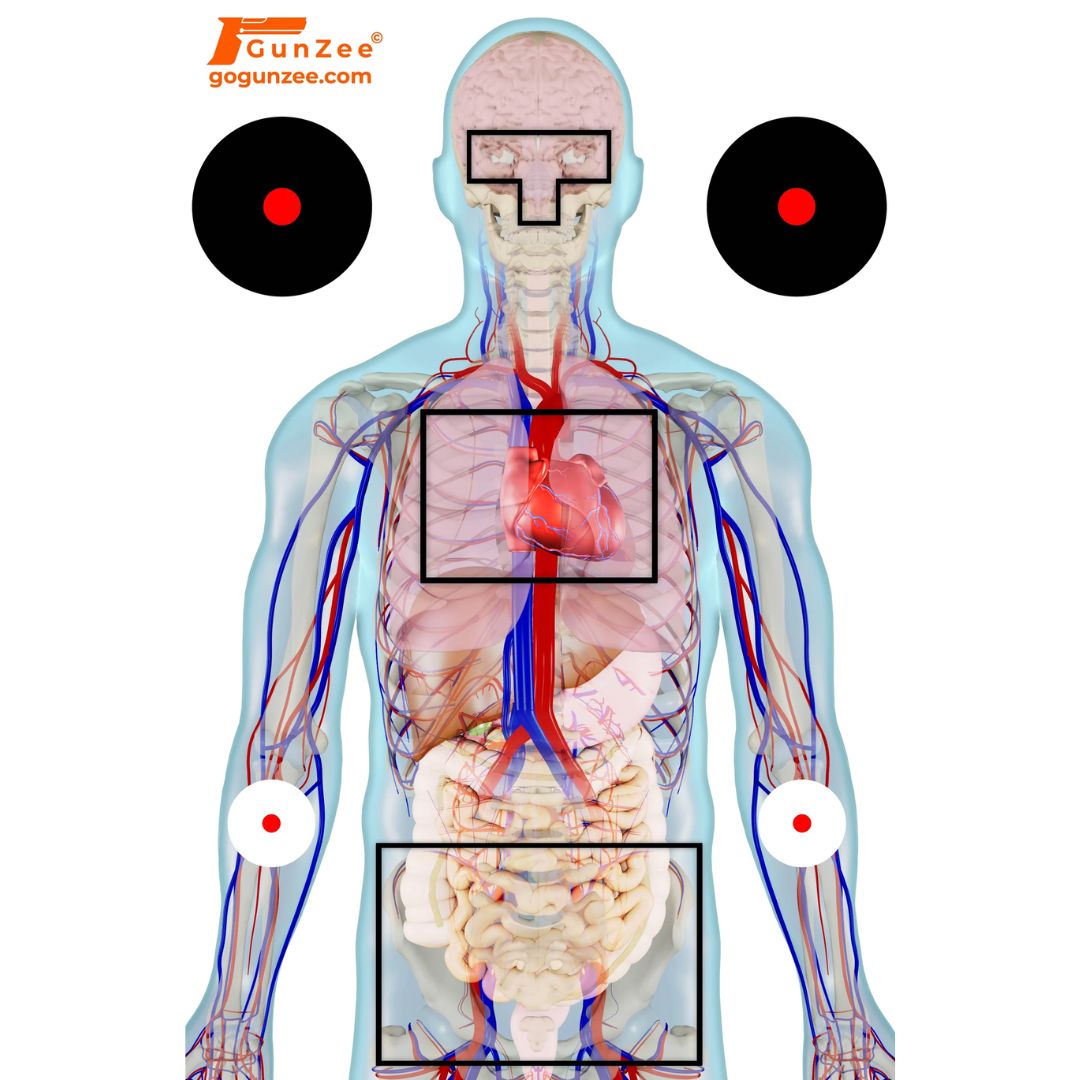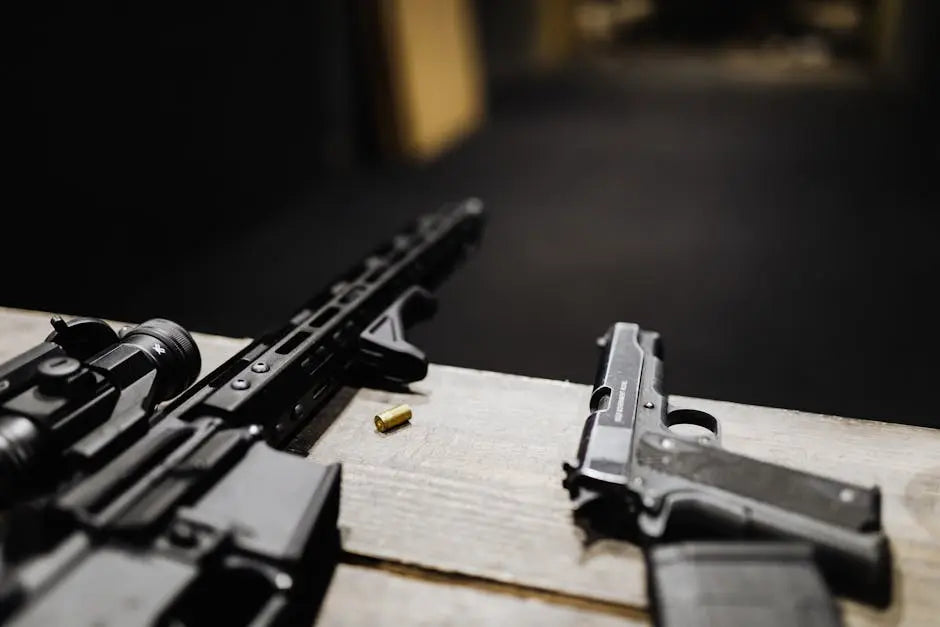In the world of firearms training, accurate and effective shooting is the primary goal for enthusiasts, law enforcement, and self-defense practitioners alike. While traditional bullseye or silhouette targets are commonly used for practice, anatomical shooting targets are becoming an increasingly popular choice. These targets are designed to simulate the human body’s critical structures, offering a more realistic and practical training experience. In this blog post, we will explore the numerous advantages of using anatomical shooting targets and how they can enhance shooting skills, preparedness, and overall training outcomes.
1. Realistic Training for Self-Defense
One of the key advantages of using anatomical shooting targets is the ability to simulate real-life self-defense scenarios. Unlike traditional bullseye targets, which focus primarily on accuracy in the abstract, anatomical targets provide shooters with a representation of human anatomy, including vital organs and key body structures. This allows users to practice shot placement in a way that is directly applicable to self-defense situations.
For instance, aiming for center mass or targeting vital organs such as the heart, lungs, or brain can be critical in a high-stress, life-threatening encounter. Anatomical targets train shooters to focus on these key areas, improving their situational awareness and enhancing their ability to neutralize threats quickly and efficiently. This type of practice can be especially useful for law enforcement, military personnel, and concealed carry permit holders who may find themselves in real-world confrontations.
2. Improving Shot Placement and Precision
Anatomical targets are designed with detailed depictions of human anatomy, making them an excellent tool for improving shot placement and precision. Traditional silhouette targets may help shooters aim for general areas of the body, but they do not provide the level of detail necessary for fine-tuning accuracy.
By using anatomical targets, shooters can focus on specific areas of the body, such as the heart, lungs, or spinal cord, and train to hit these critical zones under pressure. This not only improves accuracy but also reinforces the importance of precise shot placement in real-world scenarios, where every shot counts. Precision is particularly important for individuals training for self-defense, as effective shot placement can significantly reduce the risk of over-penetration or collateral damage in a defensive shooting situation.
Additionally, anatomical targets often incorporate varying degrees of challenge by displaying different angles or postures, further enhancing the shooter’s ability to adapt their aim and approach.
3. Enhancing Critical Thinking and Decision-Making Skills
Shooting accurately is only part of the equation when it comes to self-defense or tactical shooting; decision-making plays a crucial role as well. Anatomical targets offer an opportunity for shooters to engage in critical thinking while training. Instead of simply aiming at a generic target, users must decide which areas of the target to prioritize based on the scenario they are simulating.
For example, in a defensive shooting scenario, a shooter might need to decide whether to aim for the central nervous system for a quicker incapacitation or to aim for the heart and lungs for maximum stopping power. This mental exercise encourages shooters to consider real-world dynamics, such as angles, target movement, and potential barriers, helping them develop better judgment and decision-making skills.
Training with anatomical targets fosters a deeper understanding of the body's vulnerabilities and helps shooters think critically about shot placement based on the target’s position or posture. This skill is particularly valuable in dynamic scenarios, where quick decisions can mean the difference between success and failure.
4. Enhanced Training for Law Enforcement and Military Personnel
For law enforcement officers and military personnel, using anatomical shooting targets provides a more realistic and practical approach to firearms training. In the line of duty, precision is paramount, and officers often need to engage threats quickly and effectively. Anatomical targets help train officers to aim for the body's critical areas, such as the chest cavity or the central nervous system, which are essential for quickly neutralizing a threat.
In tactical situations, understanding the human anatomy allows law enforcement and military personnel to make informed decisions about shot placement that maximize stopping power while minimizing the risk of causing unnecessary harm. Anatomical targets also prepare officers for the realities of confrontations, where threats may be moving, wearing body armor, or presenting only partial exposure.
Many law enforcement agencies and military units have incorporated anatomical targets into their firearms training programs to better prepare their personnel for real-world encounters. This type of training helps officers and soldiers build confidence in their ability to stop a threat while reducing the potential for unintended consequences.
Conclusion
Anatomical shooting targets offer a wide range of advantages for firearms enthusiasts, self-defense practitioners, law enforcement, military personnel, and medical professionals. From improving shot placement and precision to enhancing critical thinking and decision-making skills, these targets provide a more realistic and practical approach to firearms training. Whether you are preparing for a self-defense scenario or honing your tactical skills, incorporating anatomical targets into your training regimen can significantly improve your performance and readiness in real-world situations.



